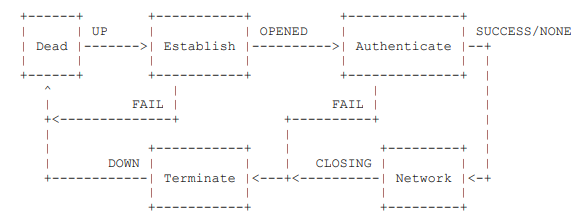1.2.5.10.1 Abstraction Model
The Point-to-Point Protocol (PPP) provides a standard method for transporting multi-protocol datagrams over point-to-point links. PPP is comprised of three main components:
- A method for encapsulating multi-protocol datagrams.
- A Link Control Protocol (LCP) for establishing, configuring, and testing the data-link connection.
- A family of Network Control Protocols (NCPs) for establishing and configuring different network-layer protocols.
PPP uses HDLC(High-level Data Link Control) which needs an object to transport PPP frames over a serial interface: asynchronous, synchronous, modems, etc.
Currently the asynchronous serial line is supported using the UART plib with ring buffer.
The Point-to-Point Protocol is designed for simple links which transport packets between two peers. These links provide full-duplex simultaneous bi-directional operation, and are assumed to deliver packets in order. It is intended that PPP provide a common solution for easy connection of a wide variety of hosts, bridges and routers.
In the process of configuring, maintaining and terminating the point-to-point link, the PPP link goes through several distinct phases which are specified in the following simplified state diagram:

